Protect Birds & Their Habitats
Birding
Protect Birds & Their Habitats
Birding
With a wide-open landscape and a continued legacy of Arizona’s ranching, the Altar Valley is a rugged and beautiful destination for birding. The valley is located in the heart of the Sonoran Desert and surrounded by the towering mountain ranges on all sides, which creates the perfect confluence of the desert-adapted biodiversity. Though it is only 20 miles from the city, few of Tucson’s 450,000 plus citizens know the Altar Valley. The Altar Valley planning area is approximately 52 miles long and 20 miles wide. It is generally bound on the south by the United States/Mexico border, on the north by State Route 86 (the Ajo Highway), on the west by the Baboquivari and Coyote Mountains, and on the east by the Sierrita, Las Guijas, Cerro Colorado, and San Luis Mountains. It also encompasses three small towns: Three Points at the State Routes 86/286 juncture, Arivaca at the extreme southeastern end, and Sasabe at the southern end.
Home to the Buenos Aires National Wildlife Refuge, the area is recognized for its variety of plant species from saguaros to oaks, providing habitat for a number of different birds including species of high conservation value such as Lucy’s Warbler, Yellow-Billed Cuckoo, Cactus Ferruginous Pygmy Owl, Elf Owl, Gray Hawk, Gilded Flicker, Crested Caracara, Masked Bobwhite Quail, and various other raptors and songbirds. The Tucson Audubon team has identified multiple clusters of saguaros used by Desert Purple Martins for nesting on the north end of the valley.
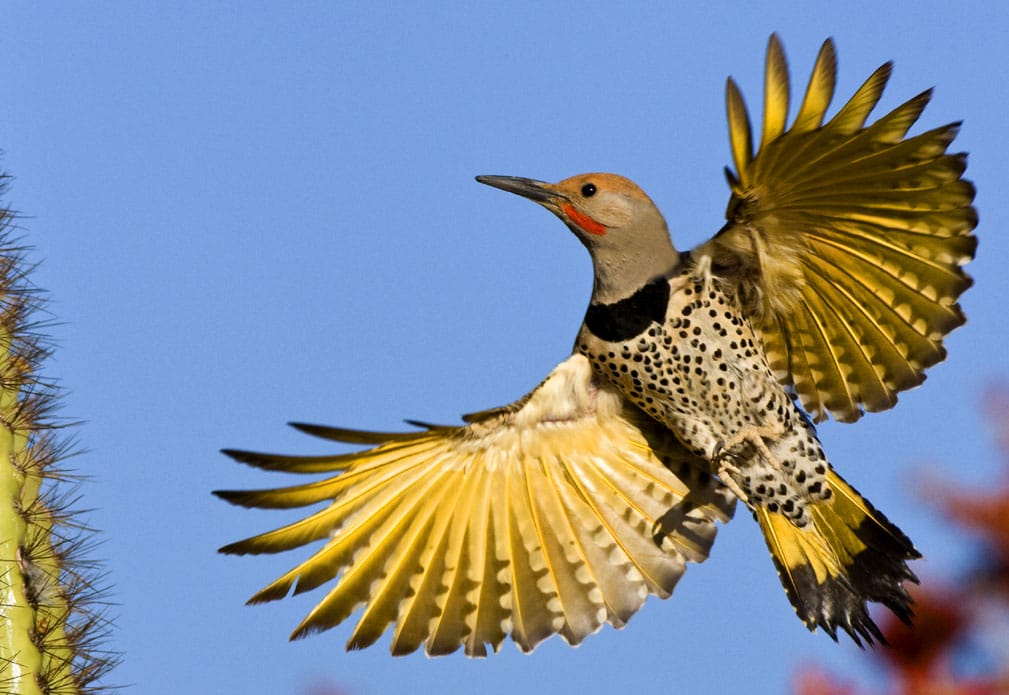
Gilded Flicker, Bruce Taubert
The Altar Valley is a working landscape – a place where a vast area is protected from residential and commercial development by the presence of human economic activity that has a much lighter touch on the land. The valley is a place where the growing of food is used as a method of open space conservation, and conservation projects are considered essential to ranching practices. The open space created by Altar Valley agricultural operations is essential to providing important habitat connectivity by maintaining the only undeveloped corridor linking western deserts to the westernmost Sky Island mountain tops. Countless wildlife species, including threatened or endangered species like the Chiricahua leopard frog, the jaguar, and the masked bobwhite quail, move through the habitat provided by the working landscape of the Altar Valley. Please be courteous of the people and ecosystems of the Valley by following the Southeast Arizona Birding Code of Birding Ethics.
If you visit the Altar Valley, please consider submitting eBird lists from your day out. We really need more eBird data from this region to help with scientific monitoring and conservation projects. When you use eBird, your birding activities contribute to a larger effort to track population and distribution trends world wide. This information contributes to scientific and conservation efforts and you can help directly by submitting your birding sightings to eBird.org.
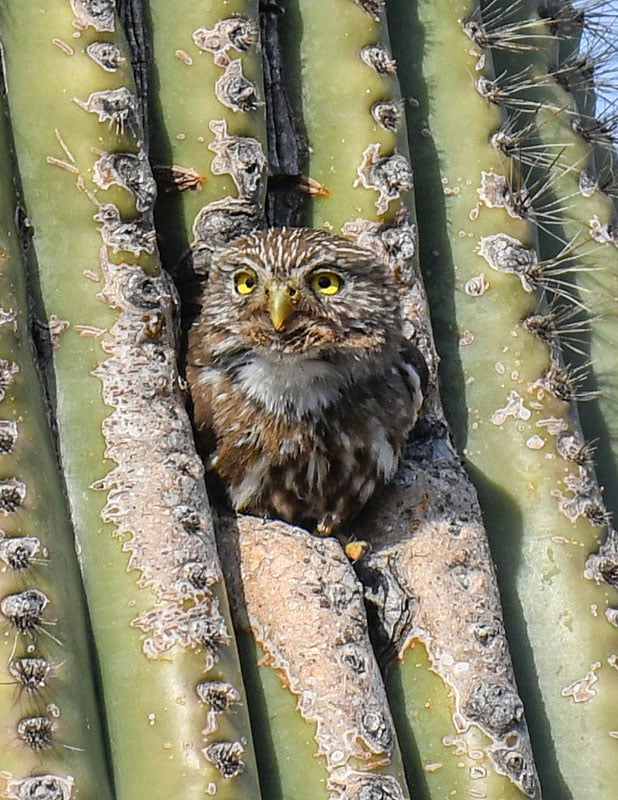
Cactus Ferruginous Pygmy Owl, Dan Weisz
Where should you go birding in the Altar Valley? Popular locations include Buenos Aires National Wildlife Refuge, Arivaca Creek and publicly accessible saguaro desert grassland areas in the northern end of the valley.
See an interactive map of birding locations.
Keep Safe While Birding in Southern Arizona
The prime birding season in southeast Arizona extends through most of the year but primarily from early March through the summer rainy season in July and August. Summer residents generally arrive between March and June and some leave as early as August. If this is your first visit and you want to see the birds residing permanently in southeast Arizona you can come any time of the year; the winter sun will feel good whereas summer temperatures are HOT. You need to be prepared for hot and dry conditions. Always carry ample water with you and in your vehicle, avoid being outdoors during the hottest times of the day and wear sun protection such as a hat and sunscreen. Be aware of where you put your feet while walking to avoid encounters with rattlesnakes and other venomous creatures of the desert southwest. Birding in working ranch lands such as the Altar Valley comes with special conditions and concerns. To make sure you are prepared, review the Southeast Arizona Code of Birding Ethics for lots of useful information.
Places to Stay in the Valley
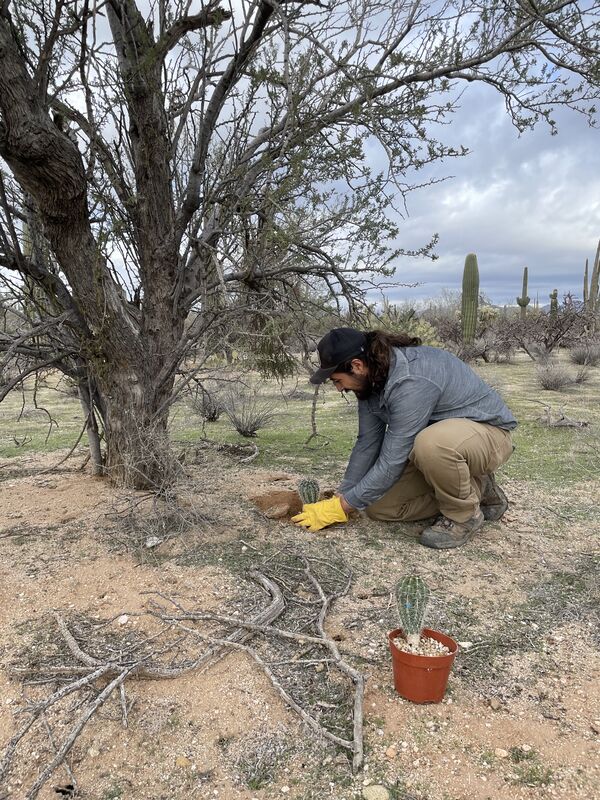
Saguaro planting project
Tucson Audubon is working to plant thousands of saguaros across Arizona. While mature saguaros are a common sight in Arizona, new generations of saguaros are very rare. Saguaros need lots of water when they first establish from seed, and due to shifting precipitation patterns, this has become much more difficult. This is an issue because saguaros are a keystone species, meaning they support a wide variety of other species in their ecosystem. Infact, over 100 species rely on the saguaro including birds, bats, insects, mammals, and reptiles! By establishing new populations using nursery grown saguaros, we can ensure that future generations will have the opportunity to see these charismatic cacti.
Masked Bobwhite Quail at Buenos Aires
The Buenos Aires National Wildlife Refuge was established in 1985 to aid in the recovery of the Endangered Masked Bobwhite Quail. Efforts to help this subspecies increase their populations have had various levels of success over the years with some of the best results occurring in recent years.
The US Fish & Wildlife Service and Altar Valley Conservation Alliance (AVCA) have been partnering to improve masked bobwhite habitat on the Refuge and assist nearby landowners in continuing conservation activities without risk of prosecution under the Endangered Species Act. In March 2023, the AVCA led a project to rehabilitate a water source and direct rainwater to floodplains in masked bobwhite habitat on the Refuge. The Service and AVCA are also developing a Safe Harbor Agreement to support private landowners, the Tohono O’odham Nation, and agricultural and tourism operations whose lands may foster masked bobwhite in the future.
Learn more about the US Fish & Wildlife Service’s efforts and the quail here:
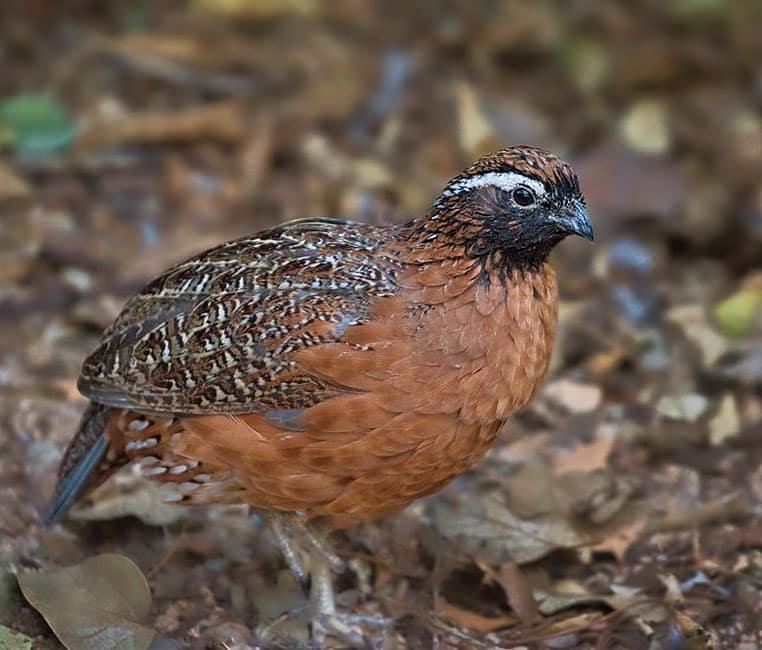
Masked Bobwhite, Rick Williams
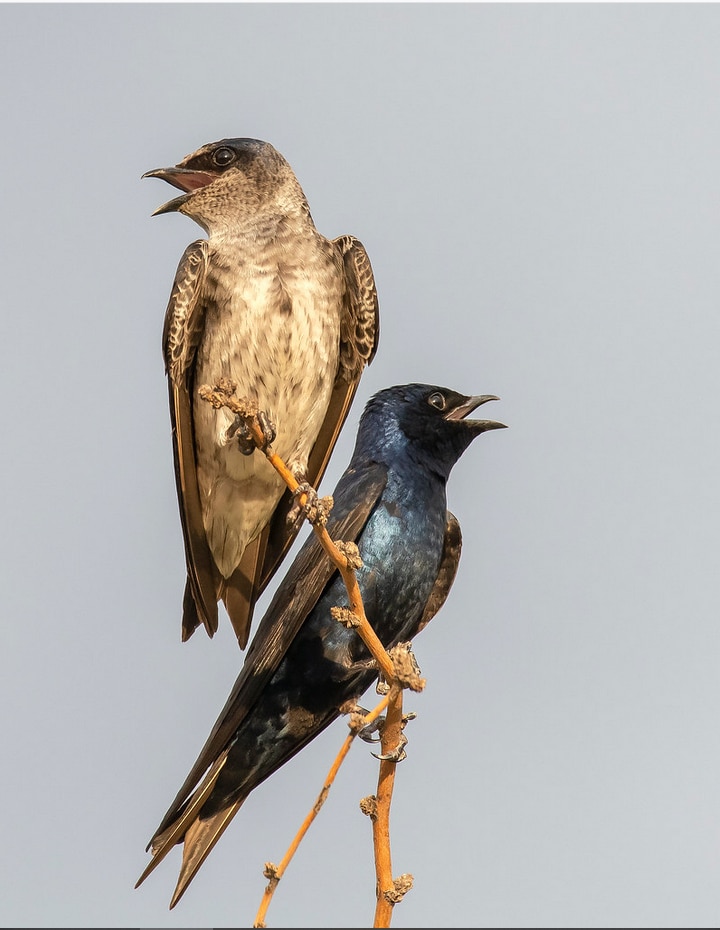
Martin pair, Francis Morgan
Desert Purple Martins in Altar Valley
Charismatic, large swallows, Purple Martins are a beloved and iconic nestbox species in the eastern half of the United States. Did you know they can be found here as well? The Desert Purple Martin (Progne subis hesperia) is a distinct subspecies that times its nesting to monsoon abundance and nests almost exclusively in saguaros or other large columnar cacti. These are “wild” martins that use naturally occurring cavities, while the eastern subspecies is said to be entirely reliant on human-made nestboxes. Desert Purple Martins are extremely understudied with large gaps in knowledge about their nesting, migration, and wintering grounds. The northern end of the Altar Valley provides suitable nesting habitat for Desert Purple Martins with nesting groups found at large, old saguaros in Sonoran Desert Habitat. Some of the first documented instances of multiple families of Desert Purple Martins nesting within a single saguaro were in the Altar Valley.
Wildlife Waters
Ranching operations benefit wildlife by building and maintaining waters, or “tanks,” that are also a very important resource for wildlife. The Altar Valley has no perennially flowing streams, so tanks provide critical water during dry periods. Many bird species, including Desert Purple Martins. will swoop over these livestock water sources to get the water they need. Buenos Aires NWR also provides water sources for wildlife and maintains and enhances historic tanks for wildlife use.
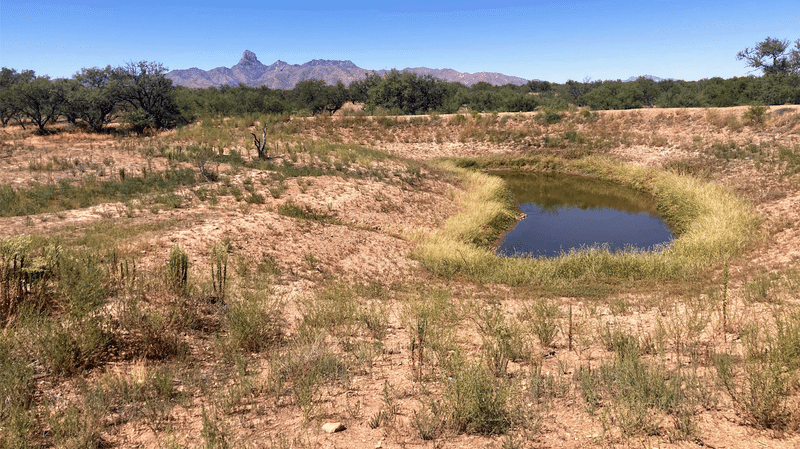
Altar Valley water tank, AVCA
Altar Valley Conservation Alliance
The Altar Valley Conservation Alliance (AVCA) is a watershed-based collaborative conservation organization founded in 1995 to conserve the Altar Valley of Arizona for future generations. They work through a strongly collaborative, science-based, community driven and integrated approach to conserve healthy and productive working landscapes, including soil and water conservation, wildfire management, habitat conservation and protection of native species, and other environmental initiatives. They promote a thriving agricultural economy by encouraging improved ranching and farming practices, diversification and innovation, and by supporting programs and policies that support more effective, long-term economic development. They also promote a resilient rural community by retaining and renewing the cultural and historical traditions of the Altar Valley.
The AVCA and TAS partnered through an AVCA Science Fellowship Grant to create this webpage, the Altar Valley birding map, and local Birding Code of Conduct.
Richard Fray